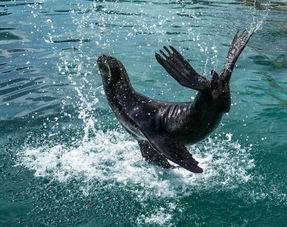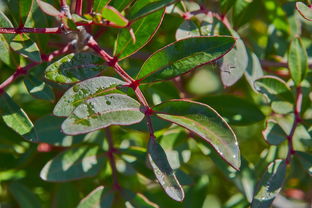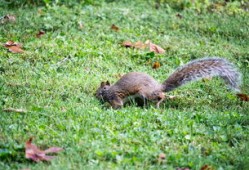Panda Cat:Unveiling the Coolest Cold Facts
- 百科大全
- 2025-09-18
- 34
Panda cats, also known as panda cats or panda-like cats, are not a recognized breed or species in the scientific community. However, they have captured the hearts of many due to their striking resemblance to the beloved panda bear. These felines often have black and white fur patterns that mimic the iconic markings of pandas, creating a unique and eye-catching appearance. In this article, we will delve into the fascinating world of panda cats and uncover some of the coolest cold facts about these enchanting creatures.
-
Origin of the Name: The term "panda cat" is a colloquialism and not an official breed name. It is used to describe cats with fur patterns that resemble those of pandas. This nickname has been popularized by social media and the internet, where images of these cats have gone viral.
-
Breed Diversity: Panda cats are not a specific breed but can be found in various breeds. The most common breeds that exhibit panda-like markings include the American Shorthair, British Shorthair, and Maine Coon. However, these markings can also appear in other breeds due to genetic mutations.
-
Genetics at Play: The black and white fur patterns seen in panda cats are the result of a genetic phenomenon known as "piebaldism" or "white spotting." This genetic trait causes the fur to have irregular patches of white, which can create the illusion of a panda-like appearance.
-
Rare Occurrence: Panda-like markings in cats are relatively rare. The chances of a cat being born with these specific patterns are low, making them a sought-after and unique find among cat enthusiasts.

-
Health Considerations: There are no known health issues directly associated with the panda-like fur patterns. However, like any cat, they can be prone to common feline health concerns. Regular veterinary check-ups are essential to ensure their well-being.
-
Adoption and Care: Panda cats, like all cats, require a loving home and proper care. They are not a separate species that needs special attention, but their unique appearance can make them more popular and potentially more expensive to adopt.

-
Internet Sensation: The internet has played a significant role in the popularity of panda cats. Images and videos of these cats have been widely shared on social media platforms, garnering millions of views and likes.
-
Conservation Connection: While panda cats are not related to panda bears, their popularity has indirectly raised awareness about the need for panda bear conservation. People who are fascinated by the appearance of panda cats may also become interested in learning about and supporting efforts to protect the real panda bears in the wild.

-
Behavioral Traits: Panda cats, like other domestic cats, exhibit a range of behaviors. They can be playful, affectionate, and independent. Their behavior is more influenced by their breed and individual personality than their fur pattern.
-
Myth Debunked: There is a common myth that panda cats are a result of crossbreeding with pandas. This is not true. Panda cats are domestic cats with a unique fur pattern, and they are not related to panda bears genetically.
-
Cultural Impact: The popularity of panda cats has also influenced popular culture. They have been featured in various forms of media, including movies, TV shows, and books, often as characters with a distinctive and memorable appearance.
-
Breeding Considerations: For those interested in breeding for panda-like markings, it's important to understand that genetics is complex. Breeding for specific patterns can be challenging and may not always result in the desired outcome.
In conclusion, panda cats are a fascinating subject that combines the allure of the panda bear's unique appearance with the charm of domestic cats. While they are not a separate species or breed, their existence showcases the diversity and beauty of the feline world. As with any pet, it's essential to provide them with a loving home, proper care, and the respect they deserve. Whether you're a cat lover or just someone who appreciates the unusual, panda cats are sure to capture your imagination and warm your heart.






















